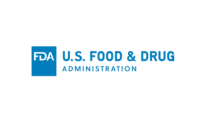Legal tensions surrounding per- and polyfluoroalkyl substances (PFAS) in food have intensified in recent years, and they are about to get more heated. A handful of recent developments, including a mid-September warning that the livers from deer near Marinette, WI, are not safe for human consumption, are behind the possible temperature change. The warning follows similar warnings for fish and deer in Michigan and fish in certain Alabama waterways.
While PFAS, so-called “forever chemicals,” in a 5-mile area around the Johnson Controls, Inc./Tyco Fire Technology Center in Marinette have contaminated deer livers, Wisconsin officials declared the venison from deer in the area safe. But the distinction shows how tricky the PFAS issue is, and with similar issues popping up across the country—and the possibility of a new administration in Washington, D.C., that could have a heavier hand on PFAS—companies and other organizations should be prepared.
For a company that ends up in PFAS litigation, the first step, logically, is to get in regulatory compliance—and do it fast. But doing so can be difficult given cross-jurisdictional inconsistencies, with some states waiting on formal drinking water limits from the U.S. Environmental Protection Agency before setting their own limits and others still forging ahead with contradictory and inconsistent standards.
Still, there are four things we advise companies facing PFAS litigation to do, even if broad regulatory clarity hasn’t happened yet.
Determine the Source of the PFAS: In a situation where food is contaminated, it’s important to find out where the PFAS is coming from, how it’s getting into animals, and how it’s making those animals unsafe to be consumed. Did the PFAS originate from contaminated groundwater? Did it come from contaminated food sources that farm animals ate? Did it come from the food packaging used to sell the product?
The next step is to fully understand the level of risk to consumers and to prepare to communicate clear information to them as soon as possible. Not only is it the right thing to do, it will limit possible damages.
Determine How the Liability—and Risk—Could Be Spread: Learning the source of the PFAS helps find out who else might be liable. Could a company facing a lawsuit file a contribution claim against a third party involved in the contamination? Is the statute of limitations applicable to any claims against those third parties close to expiring? If it is, is there enough time to file suit or should a tolling agreement, in which the parties agree to “stop” the limitations period for a specific amount of time and the third party waives its rights to argue any ensuing litigation should be dismissed due to the statute expiring, be considered?
Companies faced with PFAS litigation should also assess how their own insurance could help cover costs related to a lawsuit and provide timely notice to the insurer regarding any claim. Having a good grasp of your company’s insurance coverage, including historical policies going back decades, is imperative in matters involving environmental policies as environmental contamination is often continuous and progressive, implicating multiple policy years.
Know that Civil Liability Often Comes with Regulatory Liability: If a PFAS lawsuit is coming at a company, regulatory action—state or federal—might not be far behind. And while the originating issues might be the same, dealing with regulators is very different than navigating plaintiffs’ counsel, a judge, or a jury.
Compared with civil matters, regulatory proceedings can lead to stipulated penalties, injunctions, and even recalls against businesses. Politics also can come more into play, as a state attorney general in an election year might target a specific matter, knowing that championing an environmental cause can play well with voters.
Make Sure Records Are Good: This isn’t something that can start with the threat of PFAS litigation, but detailed records are vital in a PFAS defense. Record preservation can make it clear where contamination originated, and in these cases, the when is often just as important as the what. Contamination might have occurred decades ago, meaning preserving records, even as budgets are slashed during economic downturns, is extremely important.
In fact, when PFAS litigation looks like it’s on the horizon, that is, when a company looks like it’s about to get sued, smart counsel will often tell companies to place a litigation hold on records to ensure they are preserved. Companies don’t like hearing this as it means a lawsuit might be on the way. But it does block possible spoliation claims down the road.
Another wrinkle is the U.S. Food and Drug Administration (FDA)’s recent announcement that it will take additional steps in 2021 to reduce PFAS in food supply. This shows how concerns about PFAS are moving beyond simply the most significant PFAS human exposure pathway—drinking water—and is another reason why legal tensions will likely increase. As FDA approves testing methods for beef, chicken, pork, and catfish, it’s surely a signal of regulation to come.
It’s often said that what makes PFAS so appealing as a product, its durability, is what can cause environmental and legal issues. Those issues sometimes take decades to emerge, meaning that companies might face PFAS lawsuits from events that happened before some of their executives were even born. Being prepared is key, as is having seasoned counsel who can navigate a particularly tricky area of environmental law.




